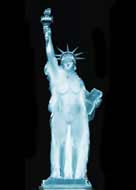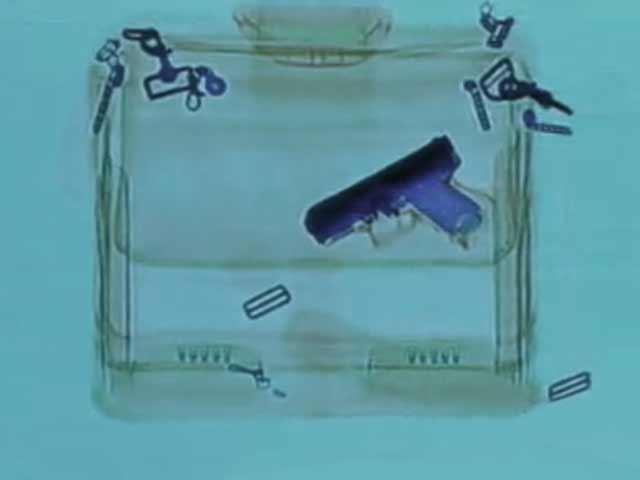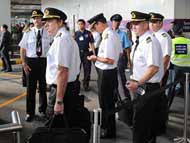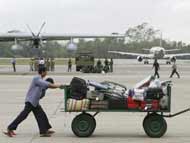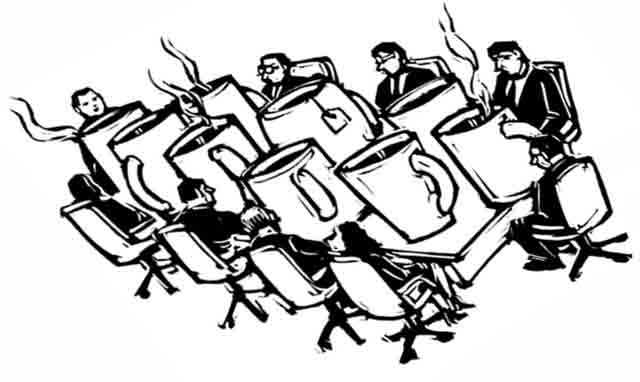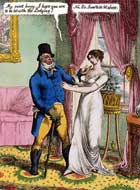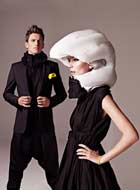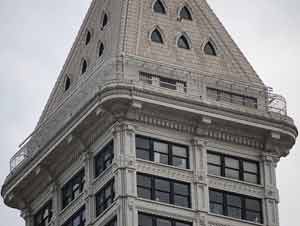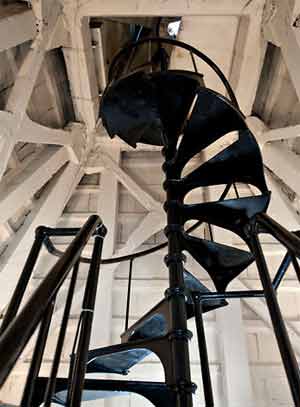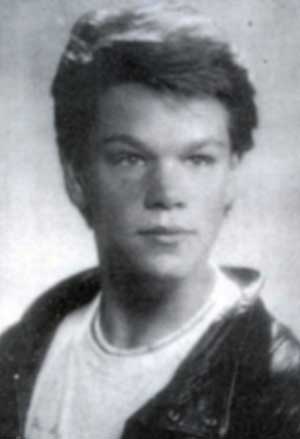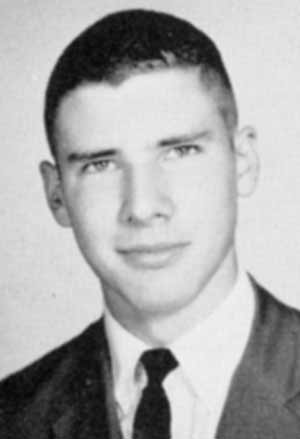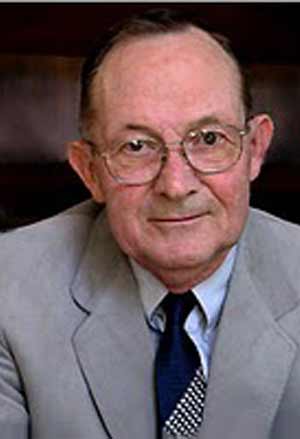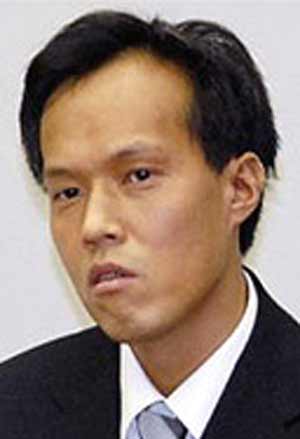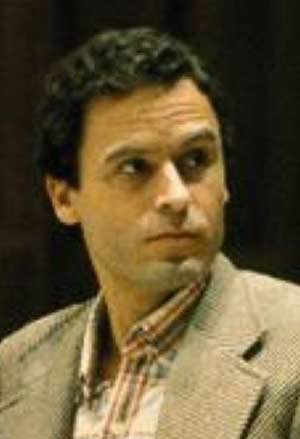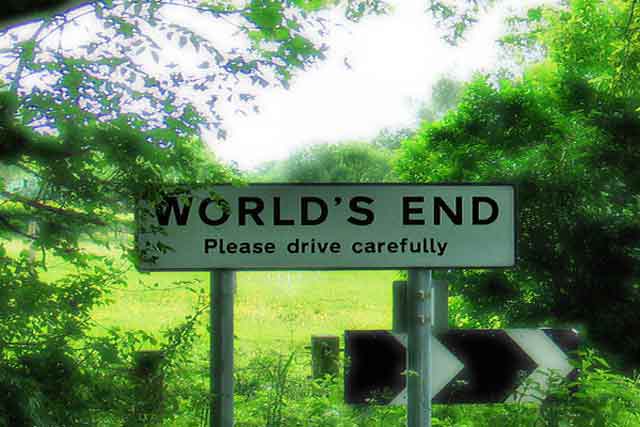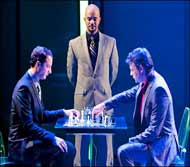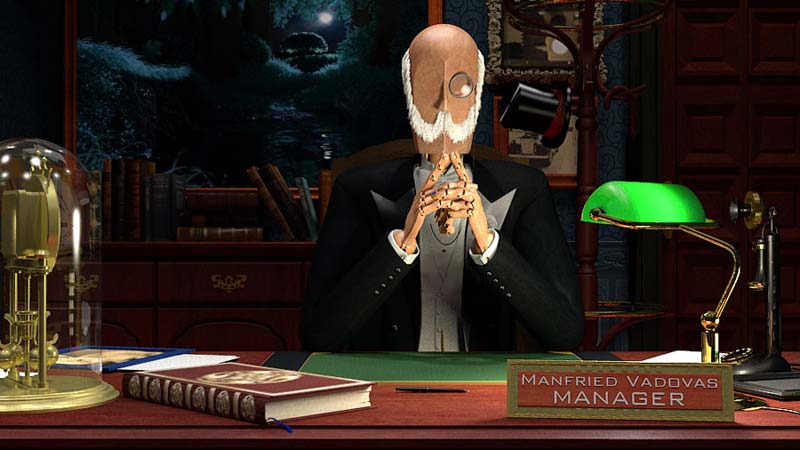It is difficult to imagine New Yorkers being porno-screened and sexually groped on crowded subway platforms or showing up an hour or two in advance for clearance for a 15-minute subway ride, but once bureaucrats get the bit in their teeth they take absurdity to a logical conclusion. Indeed, it has already begun. Last September, agents from Homeland Security, TSA, and the US Department of Transportation (assisted by the Douglas County Sheriff’s Office), conducted a counter-terrorism operation on busy Interstate 20 just west of Atlanta, Georgia. The operation required all trucks to stop and be screened for bombs. Federal agents used dogs, screening devices, and a large drive-through bomb detection machine. Imagine what the delays did to delivery schedules and truckers’ bottom lines! There are also news reports of federal trucks equipped with backscatter X-ray devices that secretly scan cars and pedestrians. With such expensive counter-terrorism activities, both in terms of the hard-pressed taxpayers’ money and civil liberties, one would think that bombs were going off all over America. But, of course, they aren’t. Subsequent domestic terrorist events have turned out to be FBI sting operations in which FBI agents organise not-so-bright disaffected members of society and lead them into displaying interest in participating in a terrorist act. Once the pretend-terrorist FBI agent prompts all the right words to be said and captured on his hidden recorder, the “terrorists” are arrested and the “plot” exposed. The very fact that the FBI has to orchestrate fake terrorism proves the absence of the real thing. Indeed, the TSA’s Gestapo attitude and methods are succeeding in making Americans more terrified of the TSA than they are of terrorists. (And rightly so.)
Confidence is what you have before you understand the problem.
—Rhinestones in the Rough
Jan. 31, 2011
The Whistleblower Protection Act of 1989 is a United States federal law that protects federal whistleblowers, who work for the government and report agency misconduct. A federal agency violates the Whistleblower Protection Act if Agency authorities make (or threatens to take) a personnel retaliatory action with respect to any employee or applicant because of any disclosure of information by the employee or applicant. Whistleblowers may file complaints that he or she reasonably believes evidences a violation of a law, rule or regulation; gross mismanagement; gross waste of funds; an abuse of authority; or a substantial and specific danger to public health or safety.
| Dr David Brenner of Columbia University on the potential health effects of “back scatter” x-ray devices: the devices currently in use and proposed for wider deployment deliver to the scalp “20 times the average dose typically quoted by TSA and throughout the industry.” He points out that the majority of the radiation from X-ray backscatter machines strikes the top of the head, where 85% of the 800,000 cases of basal cell carcinoma diagnosed in the US each year develop. Excessive x-ray exposure can act as a cancer rate multiplier, which is why the government should investigate thoroughly potential health risks associated with this technology. Known by opponents as “digital strip search” machines, full-body scanners use one of two technologies — millimetre wave sensors or backscatter x-rays — to see through clothing, producing ghostly images of naked passengers. Yet critics say that these are highly fallible and incapable of revealing explosives hidden in body cavities — an age-old method for smuggling contraband. A terrorist could hide the entire bomb works within his or her body, and breeze through the virtual strip search undetected. Officials at the [UK] Department for Transport and the Home Office have tested the scanners and are unpersuaded that they’ll work comprehensively against terrorist threats to aviation. A British defense-research firm reportedly found the machines unreliable in detecting “low-density” materials like plastics, chemicals, and liquids — precisely what the underwear bomber stuffed in his briefs. the best answer to airport security is the mass deployment of dogs. Give me a friendly German Shepherd, and I’ll gladly submit to being sniffed, rather than patted, wanded, or scanned. But unlike scanner companies, dogs have no powerful lobbyists (such as former Homeland Security chief Michael Chertoff) to advocate on their behalf. |
||
| Despite the statements issued by the TSA, American citizens do not cede their constitutional rights when they buy a plane ticket or enter an airport. After the underwear bomber’s attempt to blow himself up on a Northwest flight from Amsterdam to Detroit, the DHS rushed to deploy body scanners — some of which had already been purchased — at airports across the US. A primary advocate for the use of body scanners (or the more politically correct “advanced imaging technology”) is former DHS head Michael Chertoff. Secretary Chertoff’s advocacy of body scanners dates back to at least 2005. After leaving DHS, he founded the Chertoff Group, a consultancy firm whose corporate logo is an iron-spiked closing portcullis. The Chertoff Group represents the primary manufacturer of body scanners, Rapiscan, which is set to make billions of dollars from the sale and maintenance of body scanners. In the days after the attempted underwear bombing, Chertoff made the rounds on cable news talk shows stressing the necessity of deploying body scanners. Of course he failed to disclose the fact that his company represented Rapiscan — and he isn’t alone in having conflicting interests: a competing manufacturer of body scan systems, American Science and Technology, retained the services of two former TSA administrators who are now acting as lobbyists. Alternatives like the much less expensive and extensively tested use of bomb sniffing dogs were not considered despite the fact that well trained dogs are far more likely to detect a bomb hidden in a human cavity in addition to being able to detect traces of substances used in explosives on a person’s clothes or body. No doubt it is much harder to make a profit off training dogs — and dogs require skilled and well trained handlers. Bomb sniffing dogs and electronic trace detection systems don’t require what seems to be really desired by DHS and the TSA: submission and submissive behaviour. |
||
And how effective is TSA? Undercover TSA agents testing security at a Newark airport terminal on one day in 2006 found that TSA screeners failed to detect concealed bombs and guns 20 out of 22 times. A 2007 government audit leaked to USA Today revealed that undercover agents were successful slipping simulated explosives and bomb parts through Los Angeles’s LAX airport in 50 out of 70 attempts, and at Chicago’s O’Hare airport agents made 75 attempts and succeeded in getting through undetected 45 times. One man left a loaded Glock pistol in his carry-on computer bag by mistake and was shocked to find when he arrived at his hotel room and opened the case that it was still there, undetected. A combination of factors is likely to blame for such persistent failure on the part of screeners: low pay, poor training, and the monotony involved in watching bags pass through x-ray machines. Senator Charles Grassley, the Iowa Republican who called on the Government Accountability Office to conduct its own, independent covert tests of airport screening, decried the decision to classify the results as a national security secret. “Those results aren’t going to help terrorists figure out how to better attack us, and they certainly aren’t going to give them any more motivation to try than they already have,” Grassley said on the Senate floor in September. “Keeping the results secret will accomplish one thing, however. It will ensure that the public has no idea how effective our airport screening strategy actually is.”
| Here, for a different kind of insight into the Transportation Security Administration, are 3 of the 10 things pilots won’t tell passengers — but are talking about with other aviators.
|
| “People don’t understand that when they walk through the TSA checkpoints, they can be groped, yet all those people outside — ground personal, caterers, airline cleaners — get virtually nothing,” the pilot said. “Their screening is sliding a card and going through a door. Not screened at all. Airport security is a farce — only smoke and mirrors so people believe there is actually something going on.” Three days after the veteran pilot’s remarks, 4 federal air marshals and 2 local sheriff’s deputies showed up at his home to question him. A couple of remarks from the comments section: “The very idea of 'security’ is an illusion, and it always will be. As long as a single person smarter than you — or even more determined than you — has reason to attack you, you will never be safe, and you can never be made safe at any cost. The answer is to examine the things we are doing both openly and clandestinely throughout the world and at home, and mend our ways. That we have no intention of doing, unfortunately. Smoke and mirrors is the American Way.” “The TSA knows perfectly well that what they are doing is not security, but 'Security Theatre’. The pilot didn’t reveal anything that wasn’t already well-known to any serious attacker — they are harassing him for embarrassing them. Real security is much more work and much more expensive and the airlines aren’t able to pay for it. Instead, we do things that are useless but cheap — and easy to implement.” |
||
| Researchers have observed very specific patterns in the movement of bacteria, which has important implications for the treatment of infections. A computer program to analyse time-lapse data series of bacterial motion on surfaces, tracking thousands of bacteria for minutes to hours, showed that bacteria can spend periods of time standing up and walking around. This pattern was verified to occur with some frequency. It is hoped that this insight will facilitate better methods to treat bacterial infections. Via MillerMcCune. |
||
Microbes make up 80% of all biomass. In 1/5th of a teaspoon of seawater there’s a million bacteria (and 10 million viruses).
Most of the planet’s living metabolism is microbial. Microbes run our atmosphere. They also run much of our body.
The human microbiome in our gut, mouth, skin, and elsewhere, harbours 3,000 kinds of bacteria with 3 million distinct genes.
(Our own cells struggle by on only 18,000 genes or so.)
New research is showing that our microbes-on-board drive our immune systems and important portions of our digestion.
— Stewart Brand, Founder, Whole Earth Catalog
Bacteria work together to communicate and grow.
They are not simple solitary organisms, or “low level” entities, as earlier believed — they are highly social and evolved creatures.
Everyday pathogenic bacteria are not so smart: their social IQ score is just at the average level.
But the social intelligence of the Vortex (Paenibacillus vortex) bacteria is at the genius range.
— Professor Eshel Ben-Jacob, Tel Aviv University, Department of Physics and Astronomy
| The Law of Nations or the Principles of Natural Law Applied to the Conduct and to the Affairs of Nations and of Sovereigns was written by Emmerich de Vattel in 1758. De Vattel was a Swiss philosopher, diplomat, and legal expert whose theories laid the foundation of modern international law and political philosophy. Two notable copies of The Law of Nations owned by the New York Society Library have been associated with US President George Washington:
News of Washington’s absent-minded act went unnoticed until 1934, when a dog-eared ledger was found in the library’s basement. Given the 221-year time lapse, he would have accrued an estimated inflation-adjusted $300,000 in late fees. If you’re really interested in the book, it may be read online. (It may take you a while to finish reading it — a precedent has been set.) |
||
This is called a typogram. I wish that I had done this because I like it a lot.
You can even download a large pdf copy if you like or else order an artprint copy from them for a fee.
| One in five teenagers in America can’t hear rustles or whispers, according to a study published in August in The Journal of the American Medical Association. These teenagers exhibit what’s known as slight hearing loss, which means they often can’t make out consonants like T’s or K’s, or the plinking of raindrops. The word “talk” can sound like “aw.” The number of teenagers with hearing loss — from slight to severe — has jumped 33% since 1994. Many researchers attribute this widespread hearing loss to exposure to sound played loudly and regularly through headphones. (Earbuds, in particular, don’t cancel as much noise from outside as do headphones that rest on or around the ear, so earbud users typically listen at higher volume to drown out interference.) Headphone users who listen to music at high volumes for more than an hour a day risk permanent hearing loss after 5 years. |
||
This site contains a rather detailed, yet appropriately informative, chart showing US Energy Flow Trends in 2005. I found it surprising just how inefficient electrical power generation and delivery can be and how much energy is wasted in the transportation industry. The chart from 4 years later shows few changes — but I note that the percentages of both useful and wasted energies went down from 2005 to 2009. That leaves a lot of energy unaccounted for. What is that all about?
| A double entendre is a figure of speech in which a spoken phrase is devised to be understood in either of two ways. Often the first meaning is straightforward, while the second meaning is less so: often risqué, inappropriate, or ironic. The Oxford English Dictionary defines a double entendre as especially used to “convey an indelicate meaning”. It often expresses potentially offensive opinions without the risk of explicitly doing so. It may exploit puns to convey the second meaning. Double entendres tend to rely more on multiple meanings of words, or different interpretations of the same primary meaning, often exploiting ambiguity. Sometimes using a homophone (different spelling yielding the same pronunciation) can produce a pun as well as a double entendre. A triple entendre is a rare variation of a double entendre where a phrase can be understood in any of 3 ways. An example of this is the cover of the 1981 Rush album Moving Pictures. The title can be read to mean transporting or relocating wall paintings or photographs by a moving crew, pictures that invoke emotional (moving) reactions, or a literal “moving picture” (a film or movie). In fact the original back cover of the LP showed a film crew shooting a crowd being moved by movers moving moving pictures. An instance of double entendre involves responding to a seemingly innocuous sentence that can have a sexual meaning with the phrase “that’s what she said”. An example might be if one were to say “It’s too big to fit in my mouth” upon being served a large sandwich and someone else says “That’s what she said,” as if the statement were a reference to oral sex. This phrase was used in the Wayne’s World “Saturday Night Live” skits and was a recurring joke on the US sitcom The Office. The phrase “...as the actress said to the bishop” is used in a similar way. An 1814 engraving of a double entendre: He: “My sweet honey, I hope you are to be let with the Lodging!” She: “No, sir, I am to be let alone.” |
||
| Would you wear an invisible helmet? Reuters reports on a creative invention in bicycle safety, the Hövding, an inflatable collar that deploys like an airbag on impact, encircling the cyclist’s head. The idea is based on the premise that while cyclists are aware of the dangers of biking without a helmet, they still choose not to wear one due to appearance, bulkiness, discomfort, and of course, hair issues. The Hövding’s puffy collar contains a nylon airbag with a gas inflator, which is triggered by sensors upon collision. The airbag releases in .1 second, becoming a hood that encircles the head, providing shock absorption and pressure. The Hövding also offers a variety of colours and patterns. There are two drawbacks: the US$450 price tag is prohibitively expensive for many cyclists and, also, once inflated the Hövding cannot be used again. So if you fall off your bike, it’d better be a worthy fall! |
||


What Happened to American Health Care Costs?
In 1986, things started rising briskly over a period of years: the Reagan tax simplification got rid of a lot of the ability to expense lifestyle enhancements for workers, but left an important one intact: the deduction for health care. You can argue that the employee health care deduction basically explains the entire cost differential between American systems and others. In the image above, the blue lines show per capita spending; the purple, spending as a percentage of GDP. But roll over the image and you’ll see that same image altered to show what the graph would look like if the approximately 35% tax subsidy given to employer health care benefits were withdrawn. Suddenly, the US isn’t really such an outlier.
| In his book, How Pleasure Works: The New Science of Why We Like What We Like, Paul Bloom explodes the myth of pure experience: “What matters most is not the world as it appears according to our senses. Rather, the enjoyment we get from something derives from what we think that thing is. This is true of intellectual pleasures, such as the appreciation of paintings and stories, and also for pleasures that seem simpler, such as the satisfaction of hunger and lust. For a painting, it matters who the artist was; for a story whether it is truth or fiction; for a steak we care about what sort of animal it came from; for sex, we care about who we think our sexual partner really is.” Perhaps this obsession with the power of experience explains why so many travellers and explorers seem concerned with having “authentic” experiences rather than ones they see as packaged, hybrid, or touristy. In the traveller’s search for the truly different, he must avoid experiences that carry the whiff of “world left behind”. He avoids the McDonalds in Karachi, turns down the tour bus to the pyramids, resists the urge to text-message home from the summit of Everest. Does the ascent up Everest gain meaning because of the pure experience of frostbite and hypoxia? Or does it matter more that the climber is enduring such pain on the slopes of the world’s tallest mountain? The mask of civilisation is not actually something that the climber rips away. It’s the reason most of the climbers are there in the first place. |
||
| Basically, people think their actions are caused by a given situation, while their friend’s actions in the same situation are the result of their friend’s personality. That sounds kind of funny — you might think if you feel you’re reacting to the situation, you have less free will, but it needn’t be interpreted that way. You can also interpret it as you having a careful, intentional response to a changing situation, while viewing your friend’s response as merely fated, the result of personality. Since we generally see personality as something fairly fixed about a person, this may mean that people believe they have more free will than the people around them. It’s one of the hallmarks of a healthy mind to think more of your own actions than you should, even to the point of influencing something totally unconnected in a “magical” way (think of the lucky outfits that some people put on when watching football games). You can see that people view themselves as having more potential options over home, job, and lifestyle while believing their coworkers have fewer options. For example, waiters think it is more likely that their coworkers will continue along the path they are on already, while they themselves are more likely to run off and start the next great startup company (or do something different than what they are on the path for at the moment). We all believe we have more free will and our actions have more influence than the guy sitting next to us. But you know what? HE believes he has more free will than YOU do. Are you inflating your own free will? Or devaluing his? (I’m going with “inflating”.) |
||
The space 462 feet above the city — at the top of the historic Smith Tower (built by the Smith Corona typewriter fortune) in Pioneer Square in Seattle — is a 10-foot-in-diameter glass globe with 24 window panels that offer the family of 4 who lives there a view in all directions — Puget Sound and the Olympic Mountains to the west, the Cascades to the east. From the apartment they call “The Lighthouse,” they can see almost the entire city. But the city cannot see them. When Ms Franklin first visited Smith Tower in 1997, the apartment had been empty for more than 10 years. A 10,000-gallon cast-iron tank had once fed the fire-sprinkler system that was being removed; there were piles of concrete and no stairs but only ladders to get from floor to floor. When it rained, rain entered in large quantities. The building, now owned by the Samis Foundation, a Seattle nonprofit supporting Jewish education and culture, was having a $28 million overhaul. What the Smith Tower really needed, Ms Franklin decided, was a newly expanded 2-story dwelling: 2 bedrooms and 2 baths could be squeezed onto the 37th floor and an open living room/kitchen/dining room would fill the 38th. Naturally, this fantastic 1,750-square-foot apartment would need an occupant: herself. She managed to secure a 10-year lease. But in 2006, the Samis Foundation sold the building to Walton Street Capital for $43 million. In recent years, the building has lost or shed its major tenants, including Walt Disney Internet Group, Microsoft, and Providence Health and Services. A proposal to convert the tower to condominiums seems to have stalled and what plans the new owners may have for the penthouse is anyone’s guess.
Smith Tower — Oldest Skyscraper in Seattle
| Interesting pylon perspective. |
||
| Colorado flames roar down a hillside toward unprotected homes as the valley fire erupts a mile from the Missionary Ridge fire near Durango. The new fire sent firefighters scrambling from one fire to the other. Eleven homes were lost in the first 4 hours. This photo is about timing — both the timing of the fire as it approaches the beautiful house and the realisation that in no time, that house will be gone. |
||
- This tree seems to appear in several ads talking about the national tree of India, the Banyan (called the Indian fig tree Ficus bengalensis); it grows over a large area and its roots then give rise to more trunks and branches. Because of this characteristic and longevity, it is considered immortal and sacred, an integral part of the myths and legends in India where it is, even today, a focal point of village life. The only thing is, I don’t think this looks like a banyan and I wonder if it’s even a real photo of a real tree. I think probably not. Perversely, I still like it.
- This tree is identified by the photographer as “Odd Tree” — it was taken in 2007 and appears to be located in Parque del Retiro in Madrid. But with the angle of the ground shown, I wonder if perhaps this is a branch, not a tree? They do have some sculpted cypress trees that make for pretty odd trees — perhaps a part of one of them is in this shot?
- Philippe LePrince, Toutes ses. The picture is apparently called Sécheresse (“dryness”). That’s all I know. I’m going with “real” on this one. (But did it grow like that on its own?)
| Ministry of Design have completed a new boutique hotel in Singapore called The Club. Inspiration was drawn from the area’s popularity as a remittance centre for turn-of-the-century Chinese immigrants where hard-earned money and wistful letters were sent back to the homeland. Certain features hint of this legacy in the rooms of The Club, where the modern-day nomads and the nomads of yesterday cross paths for a moment. |
||
| Capital Hotel Stairs by Joel H Thompson. This photo was apparently taken somewhere in Arkansas — I would presume in Little Rock since that’s Arkansas’s capital and since the name of this hotel is the Capital Hotel. However, though the style of the staircase would suit the Little Rock Capital Hotel, I could find no corroborating photo anywhere. There were photos of staircases in that hotel, but none looked remotely like this. Nevertheless, I’m going with the notion that this staircase is likely to be found somewhere inside, though why no one else seems to have photographed it can (only?) be explained by the fact that there are gazillions of beautiful things to photograph there. |
||
Three Female Celebrities
- Matt Damon attended Cambridge Rindge & Latin in Cambridge, Massachusetts, graduating in 1988.
- Harrison Ford graduated from Maine Township East High School in Park Ridge, Illinois in 1960.
- In 1976, George Clooney was a freshman at Augusta High School in Augusta, Kentucky.
- Diana Spencer has no age given for this photo, but I think she looks about 9 years old, so I’m going with this picture having been taken around 1970 (but I could be wrong).
- Helena Bonham Carter, actress and wife of director Tim Burton, is great-granddaughter of H H Asquith, UK Prime Minister 1908 — 1916. Asquith’s daughter Violet (close, lifelong friend of Winston Churchill, who published a book about him in 1965) married Mark Bonham Carter; they had 4 children, including Raymond, Helena’s dad. Raymond was a merchant banker and alternate UK director representing the Bank of England at the IMF in Washington, DC during the 1960s. Maternal grandfather, Eduardo Propper de Callejón, was a WWII hero: as First Secretary of the Spanish Embassy in Paris, he worked with Portugal to issue more than 30,000 transit visas to Jewish people so they could cross Spain to reach asylum. When the Spanish Foreign Minister, a Nazi sympathiser, discovered this, he had Eduardo transferred to Morocco. Helena’s Jewish maternal grandmother, Hélène Fould-Springer, was the daughter of Baron Eugène Fould-Springer (French-born banker) and Marie Cecile von Springer (daughter of industrialist Baron Gustav Springer). Hélène Fould-Springer’s sister was French philanthropist Liliane de Rothschild (1916 – 2003), wife of Baron Élie de Rothschild; her other sister, Therese Fould-Springer, was mother of British writer David Pryce-Jones. Edward Bonham Carter, Helena’s brother, is a UK financial executive and regularly appears on a BBC finance show. Cousin Crispin Bonham Carter also acts and has been in Bridget Jones’ Diary, Pride and Prejudice and Absolutely Fabulous. Another cousin, Jane Bonham Carter, is a British politician.
- Duchess of Devonshire, Deborah Mitford (the last living Mitford sister) has written a new memoir in which she talks about chickens, her famous siblings, and having tea with Hitler. Debo’s supposed illiteracy was famous. [Her sister] teased that she had only ever developed the intellect of a 9-year-old; Evelyn Waugh made her the subject of an elaborate prank: Said Debo, “His new book arrived and I thought how nice and felt rather superior. NOT BEING A GREAT READER, to get the damned thing straight from the horse’s mouth as it were, so I undid it and read something like 'To Darling Debo, in the certainty that not one word of this will offend your Protestant persuasion.’ Naturally I didn’t look any further.” But, said her visitor, “Emma and my wife who were sitting there, bagged it and started to turn the pages which were ALL BLANK, just lovely sheets of paper with gold edges and never a word on one of them. 'That’s the sort of book which suits me down to the ground,’ [Debo maintained].”
The Achievers
The Unusual
- David Gelernter — “Taken as a whole, the internet is a startlingly complex collection of computers (like brain cells) that are densely interconnected (as brain cells are). The net grows at many million of points simultaneously, like a living (or more-than-living?) organism. It’s only natural to wonder whether the internet will one day start to think for itself. (Or is it thinking already?) These questions are important not only to the internet but to each individual computer. The ultimate goal of artificial intelligence is to build a mind out of software, a thinking computer — a machine with human-like (or super-human) intelligence. A computer-created increase in the world-wide intelligence supply would be useful. Computers dump huge quantities of information into the cybersphere every day. Can they also help us evaluate this information intelligently? Or are they mere uncapped oil wells pumping out cyber-pollution — today, a distraction but it might actually be slowly paralysing us: our choices and information channels are proliferating out of control. Each of us is surrounded by a growing crowd of computer-paparazzi all shouting questions and waving data simultaneously. There are no security guards anywhere. But no computer will be able to think like a man unless it can free-associate, unless it can hallucinate, and unless it can inhabit its thoughts (can disappear into its own mind). As the philosopher Paul Ziff insisted, “intelligence” can only mean human or human-like. (We assume an animal’s mind is human-like to the extent that the animal itself seems human-like.) Some people believe that the internet will develop an entirely new form of intelligence, but this is nonsense — like saying that you’ve discovered a new flavour of chocolate. The flavour called chocolate is exactly what we say it is — there’s no other definition. If your “new flavour” tastes like chocolate, it isn’t new; if it doesn’t, it isn’t chocolate. If your new form of intelligence is human-like, it’s not new. If it isn’t human-like, it isn’t intelligence. As far as we know, there’s no way to achieve consciousness on a computer or any collection of computers. However — and this is the interesting (or dangerous) part — the cognitive spectrum, once we understand its operation and fill in the details, is a guide to the construction of simulated or artificial thought. We can build software models of consciousness and memory and then set them in rhythmic motion. The result could be a computer that seems to think. It would be a zombie (a word philosophers borrowed from science fiction and movies): the computer would have no inner mental world, would in fact be unconscious. But in practical terms, that would make no difference. It would ponder, converse and solve problems just as a man would. And we would have achieved simulated thought.” Personally, I think major parts of some humans are already simulations at least routinely. If humans can be part machine, or machine-like at least some of the time, then perhaps machines can manage to be part human, or human-like at least some of the time?
- Retired US Supreme Court Justice John Paul Stevens, in a detailed, candid and critical essay (in a recent New York Review of Books), wrote that personnel changes on the court, coupled with “regrettable judicial activism,” had created a system of capital punishment shot through with racism, skewed toward conviction, infected with politics and tinged with hysteria. The ex-Justice was explaining why he had reversed his opinion on the desirability of the death penalty between 1976 (when he voted its reinstatement) and 2008 (when he wrote a concurrence saying he had come to believe it unconstitutional). Stevens’ essay is remarkable in itself. But it is also a sign that at 90, the author speaks his mind on issues off limits while he was on the court. During World War II, Justice Stevens served as Navy cryptographer at Pearl Harbor for more than 2 years. On returning to Hawaii in 1994, he had an emotional reaction to seeing Japanese tourists at a memorial there. “We shouldn’t allow them to celebrate their attack on Pearl Harbor,” he remembers thinking. He added that he understood why some New Yorkers would have a similar reaction to the proposed Islamic centre near ground zero. “But then, after a period of reflection, some of those New Yorkers may have second thoughts, just as I did. The Japanese tourists were not responsible for what some of their countrymen did decades ago; the Muslims planning to build the mosque are not responsible for what an entirely different group of Muslims did on 9/11.” The essay is actually a review of the book Peculiar Institution: America’s Death Penalty in an Age of Abolition by David Garland, a professor of law and sociology at New York University. The book compares American and European approaches to the death penalty, and Justice Stevens appears to accept its major conclusions.
- Chalmers Ashby Johnson (died November 2010) was an American author and professor emeritus of the University of California, San Diego. He served in the Korean war, consulted for the CIA 1967 – 1973, and chaired the Center for Chinese Studies at the University of California, Berkeley 1967 — 1972. He was president and co-founder of the Japan Policy Research Institute (now at the University of San Francisco), an organisation promoting public education about Japan and Asia. He wrote numerous books including, most recently, 3 examinations of the consequences of American Empire: Blowback, The Sorrows of Empire, and Nemesis: The Last Days of the American Republic. Johnson felt that the enforcement of American hegemony over the world constituted a new form of global empire. Whereas traditional empires maintain control over subject peoples via colonies, since World War II the US has developed a vast system of hundreds of military bases around the world where it has strategic interests. A long-time Cold Warrior, Johnson applauded the collapse of the Soviet Union but at the same time experienced a political awakening, noting that instead of demobilising its armed forces, the US accelerated its reliance on military solutions to problems both economic and political. The result of this was terrorism against the US and allies, loss of core democratic values at home, and eventual disaster for the American economy. Specifically, maintaining an empire abroad requires resources and commitments that inevitably undercut domestic democracy and ultimately produce a military (or civilian equivalent) dictatorship. US founders understood this and tried to prevent this by creating a republic. But Johnson felt the combination of huge standing armies, almost continuous wars, and ruinous military expenses destroyed this republican structure in favour of an imperial presidency. The US may lose its democracy for the sake of keeping its empire. Once a nation starts down that path, dynamics applying to all empires come into play — isolation, overstretch, uniting of forces opposed to imperialism, and bankruptcy. Via Tywkiwdbi.
- Mitsutaka Uchikoshi , 35, was found last October lying in an ice-cold field on Japan’s Rokko Mountain, a bucolic hiking spot north of Kobe. He was presumed dead as he had no detectable pulse or respiration and his body temperature was 71 degrees Fahrenheit (21.6 degrees C). While returning alone from a party on the mountain, he had stumbled and hit his head; he spent the next 24 days sprawled unconscious in the frigid air without food or water. But when he arrived at Kobe City General Hospital, something remarkable occurred: he woke up. To the astonishment of doctors who treated him for severe hypothermia and blood loss, Uchikoshi made a full recovery without a trace of brain damage. “I was in a field, and I felt very comfortable. That’s my last memory,” he said. Scientists have long said human hibernation is theoretically possible and could potentially be put to use to slow cell death when treating brain hæmorrhaging and other fatal conditions. Apparently the trick is being starved of oxygen first.
- Rabbi Ovadia Yosef, head of Shas’s Council of Torah Sages and a senior Sephardi adjudicator, says that the sole purpose of non-Jews is to serve Jews. “Goyim were born only to serve us. Without that, they have no place in the world — only to serve the People of Israel,” he said in his weekly Saturday night sermon on the laws regarding the actions non-Jews are permitted to perform on Shabbat. According to him, the lives of non-Jews in Israel are safeguarded by divinity to prevent losses to Jews. “In Israel, death has no dominion over them… With gentiles, it will be like any person — they need to die, but [God] will give them longevity. Why? Imagine that one’s donkey would die, he’d lose his money. This is his servant… That’s why he gets a long life, to work well for his Jew. Why are gentiles needed? They work, they plow, they reap. We will sit like an effendi and eat. That is why gentiles were created.” (To me, this sounds a bit like the description of black slaves or of undocumented migrant workers.) The 90-year-old rabbi’s sermons include many controversial statements. He recently caused a diplomatic uproar when he wished a plague upon the Palestinian people and their leaders, a curse he retracted a few weeks later, blessing them along with Israel’s other “peace-seeking neighbours”.
- Ted Bundy — A product of his times? Infamous crimes almost always raise anxieties of the period in which they occur — what child abductors were to the 1920s and serial killers were to the 1970s and 1980s, terrorists are to the early 21st century. After the US terrorist attck of 11 September, fear of social unraveling was replaced by anxiety over airplanes, bombs, and instant mass annihilation. Sensational crimes that don’t play to a larger societal narrative fade away. In fact, the number of confirmed serial murders in the US declined almost 70% in the past two decades, perhaps because serial killers lost their hold on America’s cultural angst after the 2001 attacks. (Does this imply that if such crimes aren’t publically reported, they will decrease?) Ted Bundy confessed to 30 murders, though it is suspected that he committed far more, possibly in excess of 100.
| “When I saw the rather large description of Core Pacific City, commonly referred to as Living Mall, in the Taipei Lonely Planet Guide, I put an asterisk next to it. Lonely Planet explained that the oddly-shaped shopping mall was designed by 'the Picasso of architecture.’ But the lady at the hotel front desk told me, 'nobody goes there anymore.’ When I first arrived, it was apparent that the front desk lady was spot on in her assessment. As opposed to Taipei 101, which was packed with people, Core Pacific City seemed to be deserted — I was there around 9pm and the mall was open 24 hours a day so I can’t speak for 'prime time’ hours, but it seemed that there were very few people. The bizarre layout of the mall was interesting enough to warrant a visit but the shops and restaurants were overpriced and some were closed. It seemed like Core Pacific City was a ‘has been’ type of attraction where Taipei 101 and New York, New York (the adjacent shopping centre to Taipei 101) was now the happening shopping and tourist attraction. I definitely do not regret going, though, because Living Mall was pretty cool looking. But the shopping and the food were the type of run-of-the-mill experiences you can get at any mall in your home country or anywhere else.” |
||
| So, you know how gorillas tend to get angry (as do many other creatures) when you look them directly in the eye? There’s something about the animals being extremely territorial and if you look at them they take that as a challenge, meaning if you get close enough they’ll try and rip your face off. Well, an ingenious company has developed a way for people to look at those kinds of animals (in a zoo, or out of one) without worrying about sending the wrong message and getting the sh*t kicked out of them. |
Contrasts
- Skyline (1995) “I remember that I kept thinking, 'If only I could be in the middle of the river on a large enough platform this picture would work.’ Finally we found a barge company in Staten Island which had the perfect barge (a floating dock) that they would tow for us. Even though I was shooting directly east, I wanted to take a chance and shoot early in the morning; directly into the sun. Luckily, my favourite weather occurred and I didn’t have to deal with the sun as a heavy mist and grayness had settled in upon us. As we manœuvered into location, I was informed that the barge could only hold that spot for a few seconds; the current was just too strong. So while the barge was making large circles, we quickly dressed all the models. Just as we were finally beginning to get into location, it started to rain harder.” (The models dressed on a flat barge? On the Hudson River? In the rain? Perhaps they actually earned their salaries that day?)
- Frankfurt Bahnhof — This seems to capture the spirit of train commutes.
- Life in the Desert: 50 Stunning Photographs — I have this personal affinity for the desert. I’m fascinated. I love it. — Erika Slezak
| At a party in Hollywood, one of the stunts was to ask each guest to write his or her own epitaph and, when called upon, to get up and read what they had written. A much-married movie actress sitting beside Will Rogers said she didn’t know what to write. Will said, “If you read it just as I write it, I will do it for you.” This is what she read: “At last she sleeps alone.” (Variously attributed to Irvin Cobb and Robert Benchley as well.) |
||
|
This content requires Javascript and Adobe Flash Player. |
Hoop Diving originally from here. |
|
| A group of chess enthusiasts checked into a hotel and were standing in the lobby discussing their recent tournament victories. After about an hour, the manager came out of the office and asked them to disperse. “But why?” they asked, as they moved off. “Because,” said he, “I can’t stand chess nuts boasting in an open foyer.” |
||
| A chess master died — after a few days, a friend of his heard a voice; it was him! “What’s it like, where you are now?” he asked. |
||
We will have our Thaumaturgy Studios, Ltd website up one day this week (if it isn’t already). We will continue to work on it between clients — we intend to produce an upgrade for our Unity Theatre walkthrough and perhaps complete the theatre basement, where the dressing rooms, practice rooms, seamstress, laundry, workshop, actors’ green room, and other areas are located. We are also working on the acts, which will constitute a stand-alone short movie. To do that, we will finish the backstage area and catwalks. This project has been (and continues to be) incredibly hard work, but we love our jobs. Please stop by for a visit.
 Animals
Animals Animation
Animation Art of Playing Cards
Art of Playing Cards Drugs
Drugs Education
Education Environment
Environment Flying
Flying History
History Humour
Humour Immigration
Immigration Info/Tech
Info/Tech Intellectual/Entertaining
Intellectual/Entertaining Lifestyles
Lifestyles Men
Men Money/Politics/Law
Money/Politics/Law New Jersey
New Jersey Odds and Oddities
Odds and Oddities Older & Under
Older & Under Photography
Photography Prisons
Prisons Relationships
Relationships Science
Science Social/Cultural
Social/Cultural Terrorism
Terrorism Wellington
Wellington Working
Working Zero Return Investment
Zero Return Investment

